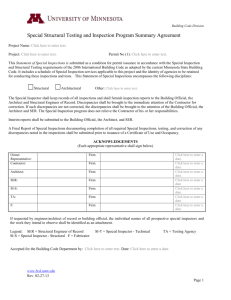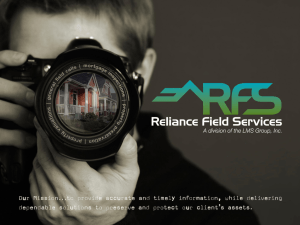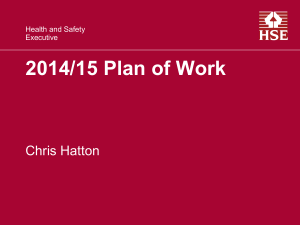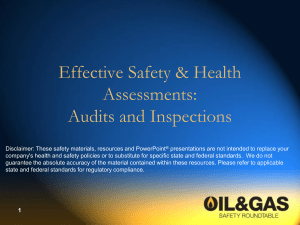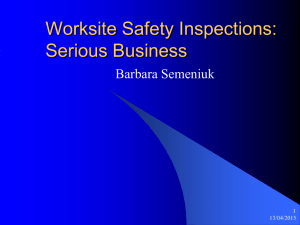Now - Plant Services
advertisement
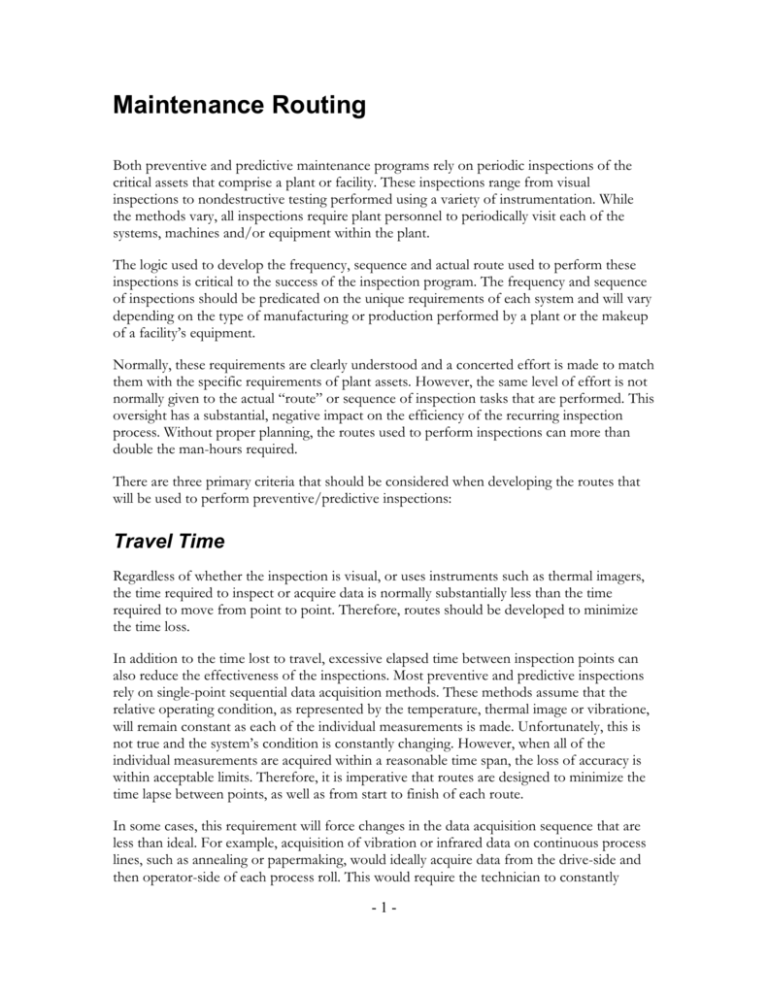
Maintenance Routing Both preventive and predictive maintenance programs rely on periodic inspections of the critical assets that comprise a plant or facility. These inspections range from visual inspections to nondestructive testing performed using a variety of instrumentation. While the methods vary, all inspections require plant personnel to periodically visit each of the systems, machines and/or equipment within the plant. The logic used to develop the frequency, sequence and actual route used to perform these inspections is critical to the success of the inspection program. The frequency and sequence of inspections should be predicated on the unique requirements of each system and will vary depending on the type of manufacturing or production performed by a plant or the makeup of a facility’s equipment. Normally, these requirements are clearly understood and a concerted effort is made to match them with the specific requirements of plant assets. However, the same level of effort is not normally given to the actual “route” or sequence of inspection tasks that are performed. This oversight has a substantial, negative impact on the efficiency of the recurring inspection process. Without proper planning, the routes used to perform inspections can more than double the man-hours required. There are three primary criteria that should be considered when developing the routes that will be used to perform preventive/predictive inspections: Travel Time Regardless of whether the inspection is visual, or uses instruments such as thermal imagers, the time required to inspect or acquire data is normally substantially less than the time required to move from point to point. Therefore, routes should be developed to minimize the time loss. In addition to the time lost to travel, excessive elapsed time between inspection points can also reduce the effectiveness of the inspections. Most preventive and predictive inspections rely on single-point sequential data acquisition methods. These methods assume that the relative operating condition, as represented by the temperature, thermal image or vibratione, will remain constant as each of the individual measurements is made. Unfortunately, this is not true and the system’s condition is constantly changing. However, when all of the individual measurements are acquired within a reasonable time span, the loss of accuracy is within acceptable limits. Therefore, it is imperative that routes are designed to minimize the time lapse between points, as well as from start to finish of each route. In some cases, this requirement will force changes in the data acquisition sequence that are less than ideal. For example, acquisition of vibration or infrared data on continuous process lines, such as annealing or papermaking, would ideally acquire data from the drive-side and then operator-side of each process roll. This would require the technician to constantly -1- move from the operator-side to the drive-side of the line. This would dramatically increase both the interval between measurement points and the total elapsed time to acquire the route. To minimize these intervals, sequential data is acquired from all measurement points on the operator-side and then all points on the drive-side of the line. Logical Sequence of Inspection Periodic inspections are performed in an effort to anticipate the need for preventive and/or corrective maintenance. Therefore, the data, including visual observations, should be acquired in a logical sequence that will facilitate this objective. As a rule, the sequence should follow the process. As an example, thermal inspection of a simple centrifugal pumping system should start with the suction supply, i.e. tank, deaerator, etc., and follow the suction piping to the pump, and continue down the discharge piping to reasonable end point. Using this sequence will measure the change in temperature from the source, to the pump; quantify the temperature change within the pump and from the pump to the end of the transfer system. On continuous process systems, such as paper machines, primary metals, printing, etc., the routes should follow the process flow. Safety In most cases, the inspector or technician must be in close proximity to operating systems, machines or equipment in order to observe or acquire predictive maintenance data. Therefore, safety must be a primary consideration during route development. Routes should be developed that assure personnel safety as the technician travels from inspection point to inspection point, as well as while they acquire data. When predictive instruments are used, consideration should be given to the methods used to acquire data. For example, most vibration monitoring instruments use a coiled cable to connect a transducer to the data logger. In its relaxed state, this cable forms a loop of about two feet that swings around knee-level as the technician moves from point to point. This loop can easily entangle with moving shafts or other machine components. Special attention should also be given to inspections using fully imaging infrared systems. Most of these instruments use a single-eye viewer that forces the user to look through the eyepiece to acquire thermal images. During these periods, the technician is blind to his or her surroundings. As a result, there is a real potential for injury or worse. When this type of instrument is used, the route must be configured so that the actual inspection point will permit the technician to remain motionless in a completely safe location. The only alternative is the addition of a safetyman that will act as the technician’s eyes during the data acquisition sequence. The routes must also consider the areas to be inspected. In addition to safety concerns pertaining to confined spaces, the remoteness of inspection areas should be considered. A substantial percentage of inspections must be conducted in remote areas, such as basements, behind machinery and other lightly traveled areas. Should an accident occur in these areas, there could be a considerable time lapse before the technician would be missed. In these cases, the route should include either a safetyman or a report-in system that would alert a responsible person if the technician fails to return within a prescribed time. -2- Summary Preventive and predictive inspections are essential to effective maintenance management, but they must be performed properly. Careful consideration must be given to ensure that best practices are followed at all times. Even apparently simple things, such as the routes used to sequence these inspections, can and do affect the benefits that will be derived. -3-

